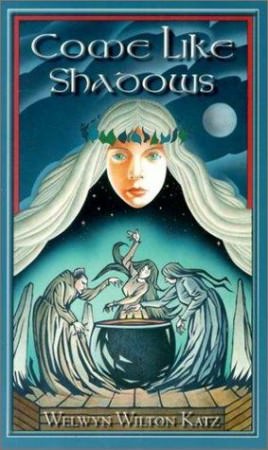The Treatment of Mythology in Children’s Fantasy
Click here to read this article from La Trobe University
 The Treatment of Mythology in Children’s Fantasy
The Treatment of Mythology in Children’s Fantasy
By Dave Berry
The Looking Glass : New Perspectives on Children’s Literature, Vol 9, No 3 (2005)
Introduction: Fantasy stories trace their roots back to far older tales: the myths and legends of various cultures, which grew from oral storytelling in the days when myths were the only explanation for the mysterious workings of the real world. To a fantasy author mythology is both a blessing and a curse. On one hand, the themes and characters of myth have enthralled audiences for hundreds or even thousands of years, and they are likely to retain their appeal for many generations to come. On the other hand lurks the problem of creativity: how can a writer come up with new variations on stories that already exist in hundreds of different versions?
In the present day, when readers place great emphasis upon originality, fantasy stories distinguish themselves by the degree to which the author employs or abandons the conventions of mythology. Writers like C. S. Lewis and J. R. R. Tolkien closely adhered to the tradition of European myths. Catherine Anthony Clark followed the myths of another culture, that of native North America. Welwyn Wilton Katz set off in another direction altogether: turning the Arthurian legends upside down, rewriting the stories instead of building on them. All these approaches create fantasy from the same ingredients, but according to different recipes. The resulting variety of flavors keeps readers coming back for more.
A fantasy author’s first decision is also the most important. What rules govern the work? Should the fantasy world be a charming, lighthearted place like Neverland or Oz? Should it be grimly realistic and touched with tragedy, like Middle Earth or Prydain? Should it intrude upon the real world or remain separate from it? Fantasy runs by its own internal laws, established by the author. Tolkien and Lewis largely allowed tradition to set the rules for them. Tolkien followed the guidelines of ancient Norse and Anglo-Saxon mythology, mingled with a bit of provincial English folklore (for the hobbits) and Christian doctrine (for Sauron, the great destroyer). Lewis used the medieval English and French romances—Narnia itself springs almost directly out of Chretien de Troyes or Marie de France—with a strong twist of Christian symbolism. This English literary tradition rises with Beowulf and continues to the present day. Other, more modern writers sought out mythology from other sources: Ireland (O. R. Melling), Wales (Lloyd Alexander and Susan Cooper), and North America (Catherine Anthony Clark), to name a few.

No comments:
Post a Comment